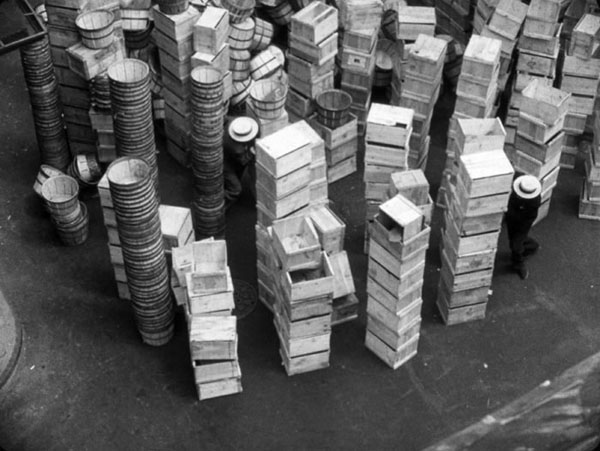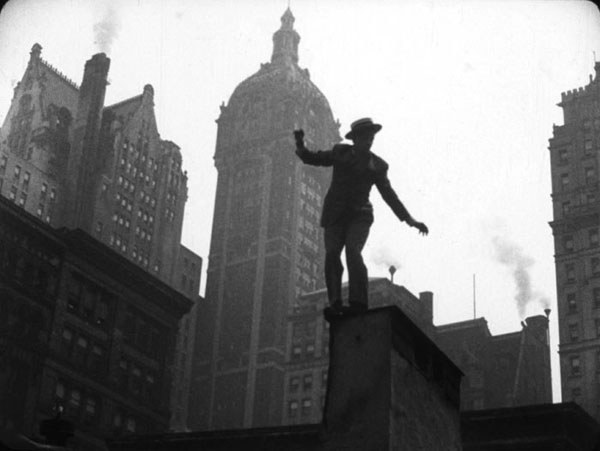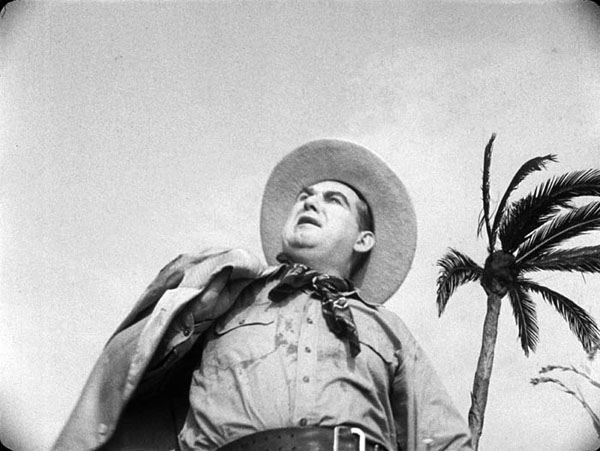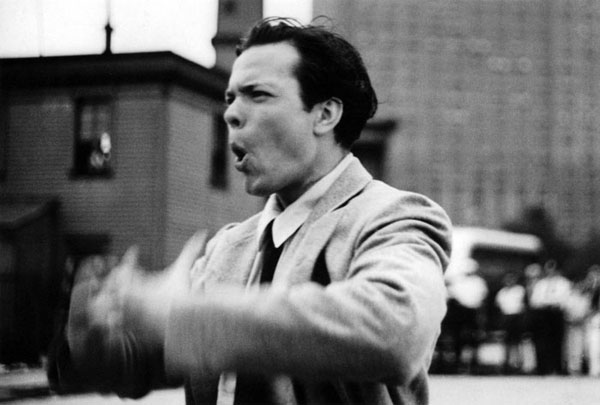“The National Film Preservation Foundation, George Eastman House, the Cineteca del Friuli, and Cinemazero today announced the recovery of Orson Welles’s long-lost Too Much Johnson (1938), filmed two years before the celebrated American director went to Hollywood to make Citizen Kane (1941).”
So begins the press release announcing the news of the day, the week, and—well, we’ll just see how the rest of the year pans out. In his engaging piece for the New York Times, Dave Kehr reminds us that Welles had dabbled in cinema before Kane. In 1934, he shot The Hearts of Age (click the link to watch it), “an eight-minute parody of an avant-garde allegory.” But also before Kane, he directed “about 40 minutes of footage intended to be shown with Too Much Johnson, a revival of an 1894 farce that Welles intended to bring to Broadway for the 1938 season of his Mercury Theater.”

Each of the three acts of that revival was to have been preceded by projections of silent comedic shorts. “One challenge to appreciating the rediscovered, unfinished films for Too Much Johnson—and we might best think of them as three short films—is putting them in their intended theatrical context,” writes Scott Simmon for the NFPF in “About the Mercury Theatre Production” (PDF). “The longest and most finished piece, the Act 1 prologue, shows the philandering Billings (Joseph Cotten), who has been womanizing under the name of Johnson, chased at breakneck speed across Manhattan by a wronged husband,” notes the NFPF. Kehr adds that the rest of the cast were primarily Mercury regulars and that the music was composed by none other than Paul Bowles.
Kehr also tells the story of the loss and rediscovery of the films. When the show previewed, it bombed, so Welles “set the film aside and forgot about it.” He rediscovered it himself, probably decades later, found it to be “in perfect condition,” and stored it in his Spanish villa—which burnt down.
But another 35mm nitrate work print has now been rediscovered in a warehouse in Pordenone, Italy, where Too Much Johnson will see its first proper premiere presentation on October 9 at the city’s silent film festival, Le Giornate del Cinema Muto. Eastman House, which directed the preservation with funding from the NFPF, will host the U.S. premiere on October 16, in Rochester, New York.
Now, here’s the thing. The NFPF also plans to make the films available online—but they need to raise the money to do so. We need to start brainstorming up a few ways to make that happen.
Meantime, the NFPF has posted a collection of images and, as Kehr writes, they “suggest a young filmmaker—Welles was all of 23 at the time—with a striking command of his medium. The images are unmistakably his, with their strong, close-cropped compositions, powerful diagonals and insistent, ironic use of the ‘heroic angle’—the positioning of the camera to look up at the actor as if he were a statue posed on a pedestal.”
Viewing. Also at the NFPF site, you can watch the earliest known footage of Welles directing a film, 43 seconds preserved by the UC Berkeley Art Museum and Pacific Film Archive, showing the Mercury Theater troupe on location in July 1938 shooting the movie prologue to Act III of Too Much Johnson.
Update, 8/9: Preservationists and curators at the George Eastman House discuss the restoration:
Update, 8/10: Peter Biskind “is the wrong choice to edit a book about Orson Welles,” argues Ignatiy Vishnevetsky in the Chicago Tribune. My Lunches with Orson “often reads like a deliberate settling of scores on Biskind and Jaglom’s part. Their primary target is director Peter Bogdanovich, who was unflatteringly depicted in Easy Riders, Raging Bulls and has since publicly attacked Biskind’s work…. By repeatedly bringing up Bogdanovich, Lunches invites comparisons to This is Orson Welles, the 1992 book edited from interviews Bogdanovich conducted with Welles. Unlike the largely passive Jaglom, Bogdanovich engaged Welles in conversation, resulting in a text rich with in-depth discussions of everything from editing to Yiddish theater…. This is Orson Welles is an essential book for both Welles enthusiasts and people with a general interest in movies. Lunches with Orson, on the other hand, is too specious to interest the former group and too uninformed to be very helpful to the latter.”
Update, 8/11: In the Los Angeles Review of Books, Steve Wasserman tells the terrific story behind the last piece that Welles would write for publication, a tribute to Jean Renoir.
For news and tips throughout the day every day, follow @KeyframeDaily on Twitter and/or the RSS feed. Get Keyframe Daily in your inbox by signing in at fandor.com/daily.






